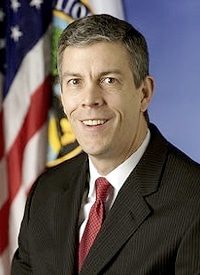
Nearly half of America’s public schools failed to meet federal standards under the No Child Left Behind (NCLB) law in school year 2010-2011. The Center on Education Policy (CEP) issued a report showing that more than 43,000 schools, or 48 percent, did not make Adequate Yearly Progress (AYP) this year, tallying an 11-percent increase over the 39 percent of schools that did not make AYP in 2010 and the sharpest drop in educational achievement since the law took effect a decade ago.
In 35 states, the percentage of schools failing to meet AYP standards reached a six-year high, according to an analysis of trends running from 2006 through 2011. In 24 states and the District of Columbia, at least half of the public schools did not make AYP, and in five states (Missouri, Florida, Massachusetts, New Mexico, and South Carolina) plus D.C., at least 75 percent of schools did not meet the federal requirements.
“The fact that half of American schools are considered ‘failing’ under NCLB shows how crudely the law measures the quality of a school,” said CEP President Jack Jennings. “NCLB needs to be changed, and since Congress is hamstrung, the Obama administration is right to move ahead with waivers of NCLB provisions.”
In September, Secretary of Education Arne Duncan (pictured above) announced a decision by the Obama administration to allow states to apply through a waiver process for flexibility in some cardinal aspects of NCLB. “With so many schools not making AYP in some states and with Congress lagging in reauthorizing the Elementary and Secondary Education Act, it’s not surprising that Secretary Duncan would consider offering waivers from the AYP requirements and the 2014 deadline,” asserted Alexandra Usher, one of the report’s authors. The organization explained further in a press release:
While the percentage of schools not making AYP has increased nationally, the CEP analysis found wide variation across states in 2011, ranging from about 11 percent of schools not making in Wisconsin to about 89 percent in Florida. These variations may be due in large part to differences in states’ tests, demographics, proficiency targets, and other factors, the report cautions, and make it inappropriate to compare AYP results across states. In addition, results can vary from year to year even in the same state, especially if the state’s proficiency targets have recently increased, as they are required to do periodically under NCLB. “States with a high percentage of schools failing to make AYP should not automatically be considered to have weak educational systems — they may have harder tests or higher proficiency targets,” explained Usher.
While CEP’s findings are far below the 82-percent failure rate that Duncan forecast earlier this year, they still manifest a daunting trend for educational achievement. Under NCLB, states are required to be proficient in math and reading by 2014, which the majority of educators believe is an impossible goal.
“Whether it’s 50 percent, 80 percent or 100 percent of schools being incorrectly labeled as failing, one thing is clear: No Child Left Behind is broken,” averred Duncan, responding to the analysis. “That’s why we’re moving forward with giving states flexibility from the law in exchange for reforms that protect children and drive student success.”
Critics of the law point to the data as proof that the Bush administration’s goals in improving student attainment were unrealistic and measuring schools to those standards are unfair and inaccurate. “A lot of educators saw the weaknesses in No Child Left Behind even when it was rolled out — that this day and time would come,” Georgia schools Superintendent John Barge told the Associated Press. “It’s kind of a train wreck that we all see happening.”
Much of the disparity between states’ school performance levels, critics note, is fueled by an overreaching federal law that is out of touch with the educational institution. For instance, some states have more difficult tests than others and some states have higher numbers of immigrants and low-income children. Moreover, because the law mandates that states raise the bar each year for how many children must pass the test, some states delay the largest increase until this year to avoid sanctions.
According to Mr. Jennings, CEP’s analysis further solidifies the case that the law is “too crude a measure” to accurately illustrate what’s happening in local education. “No Child Left Behind is defective,” he alleged. “It needs to be changed. If Congress can’t do it, then the administration is right to move ahead with waivers.”
However, President Obama’s and Mr. Duncan’s grand plan to issue NCLB waivers does not fix the problem, opponents have noted, nor does it help localize education. According to the New York Times, the program comes with strings:
For a waiver to be approved, … states would need to show that they were adopting higher standards under which high school students were “college- and career-ready” at graduation, were working to improve teacher effectiveness and evaluation systems based on student test scores and other measures, were overhauling the lowest-performing schools, and were adopting locally designed school accountability systems to replace No Child’s pass-fail system.
Further, as reported by The New American in August, the administration’s waiver system grants unprecedented authority to the executive branch that not only violates constitutional law, by dictating education policy to states and localities, but still leaves education under the firm grip of Washington.
While CEP’s report exposes the flaws of NCLB, it should also expose the inadequacies of federal control in education. Beyond repealing NCLB, maybe Washington should take a hard look at dismantling the very culprit that has burrowed itself within the heart of the problem — the Department of Education.



